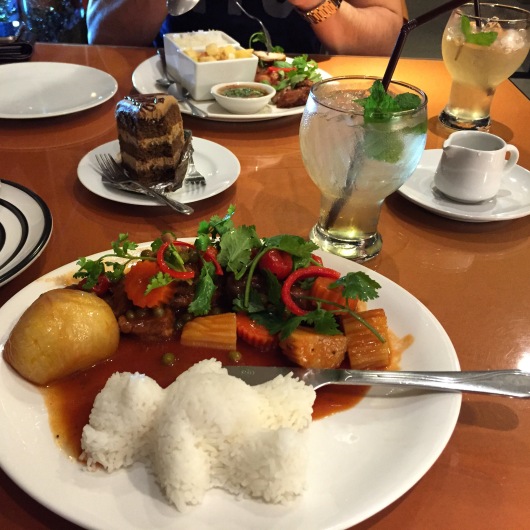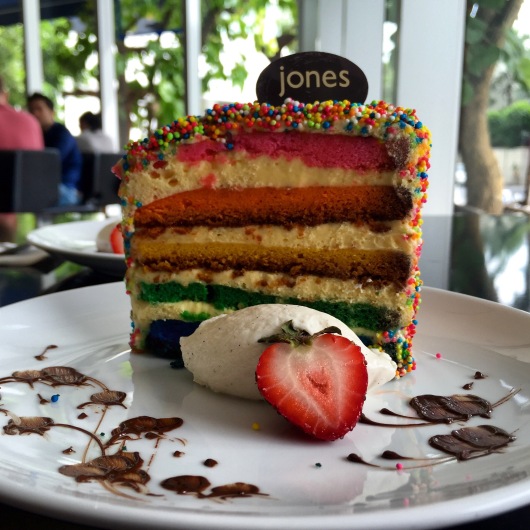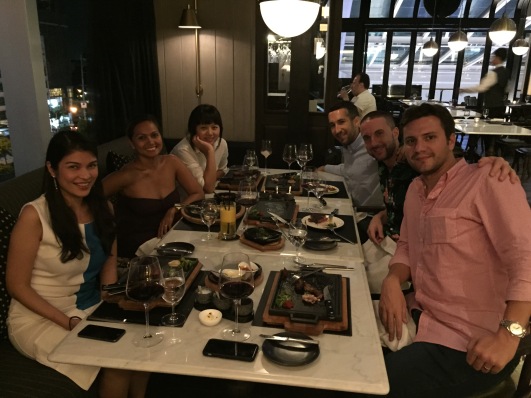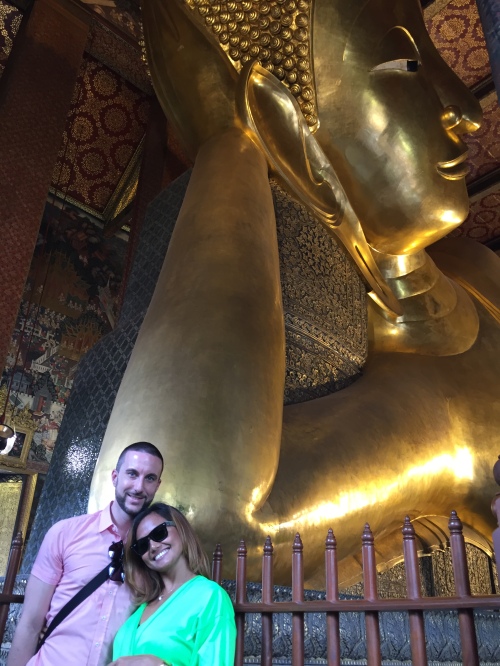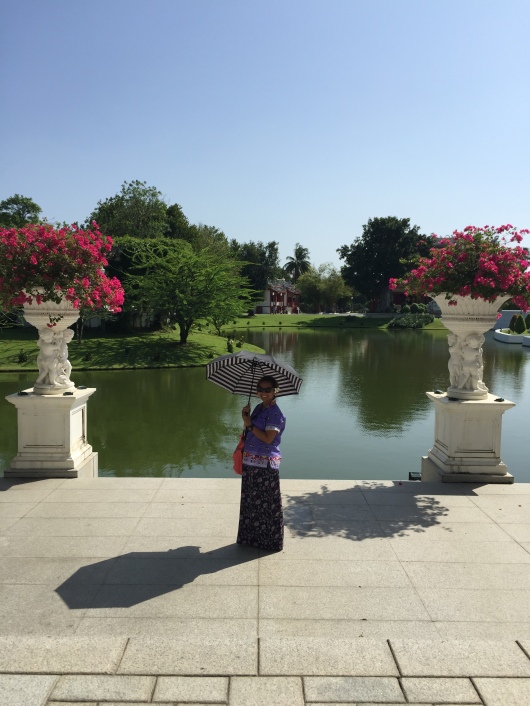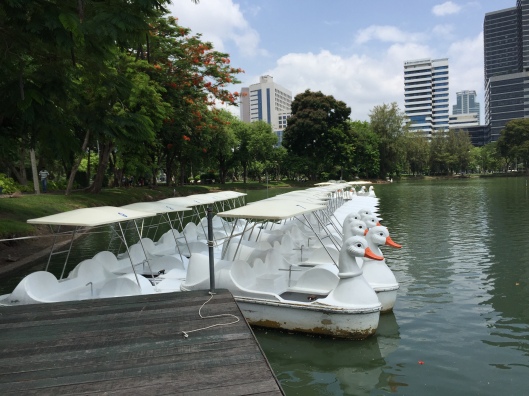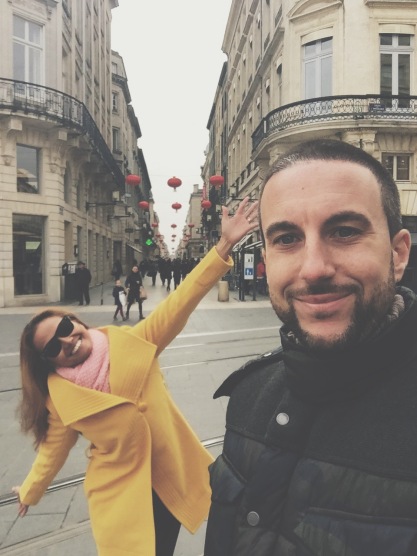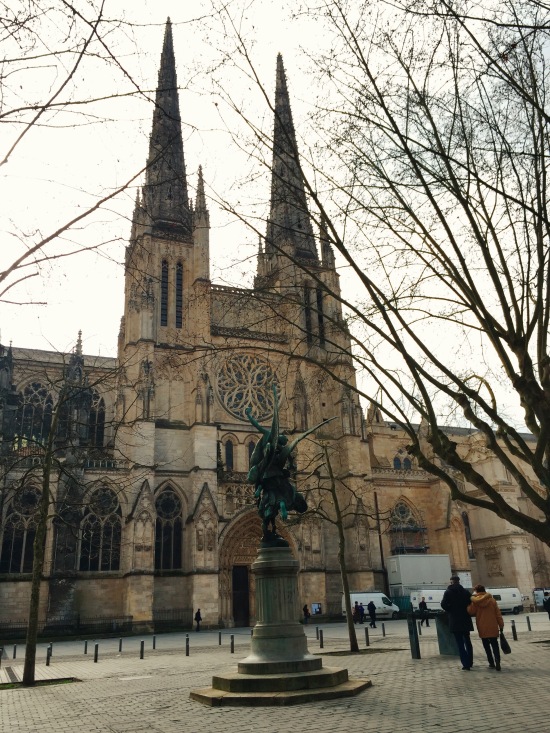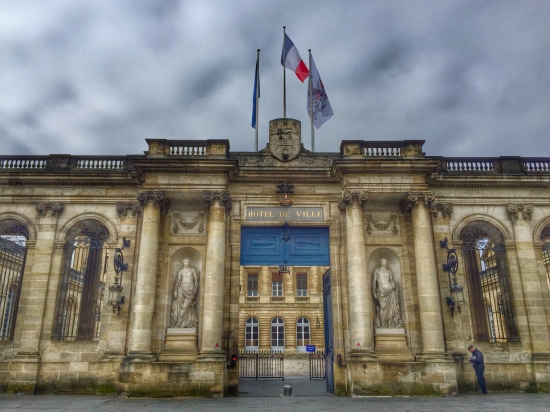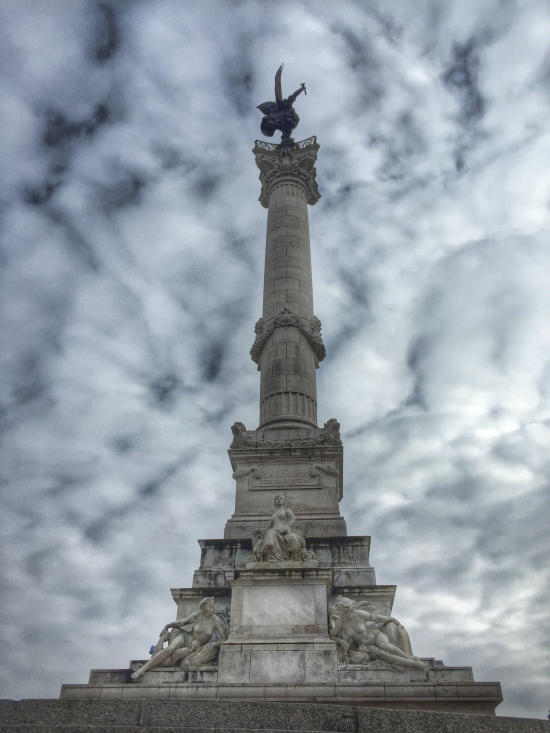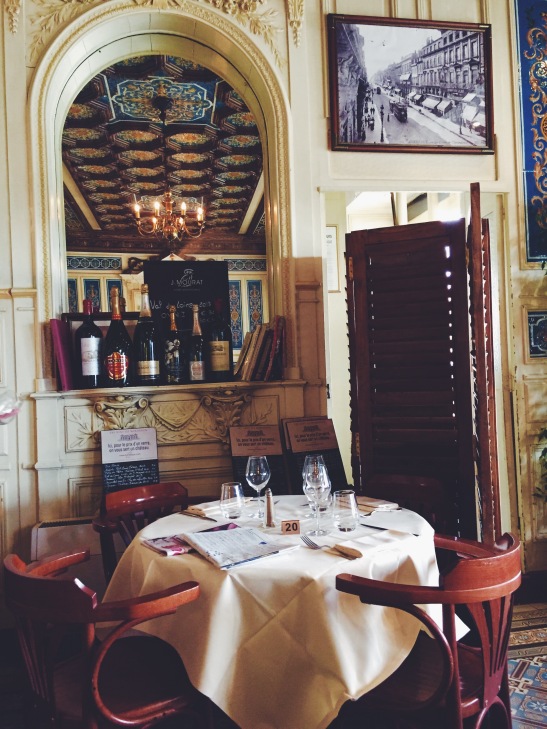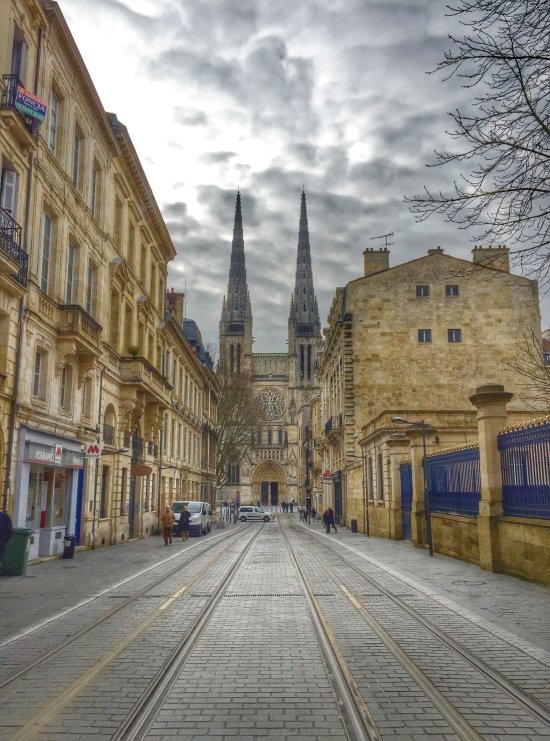TRAVEL: One Week in BANGKOK
Perhaps one of the easiest and most convenient cities to visit if you’re coming from Singapore, is Bangkok. And probably the most versatile as well, because you simply won’t run out of things to do and places to discover in and around this densely-populated city. Temples, check. Shopping, check. Food, ohmygoodness check! Clubs and restaurants, check. River cruise, check. Great massage, check. And why not sex and booze while we’re at it. Whether you’re a first-time traveler or you’ve visited many a time, Bangkok will always have something special in store for you.
We were in Bangkok for one week last month and though it wasn’t totally for vacation as Hubby had to run some business type of errands (and I was his perpetually-hungry-because-heavily-pregnant assistant!), we still managed to get some touristy things done and scored heaps of pampering points in the food and massage departments.
So, you know that there are a few things Bangkok can never go wrong with. And these are some of those things, as far as we are concerned.
1. FOOD. Thailand is considered a certified heavyweight when it comes to food. In Bangkok, every visitor is spoilt for choice, both in local and international cuisines. Among those that we’ve tried and thoroughly enjoyed were:
Chapter 31. Chapter 31 is one of those happy places we go to each time we’re in Bangkok and in need of a good foodie treat at a great value. Located along Soi 31 in Sukhumvit, Chapter 31 stands out against all the other restaurants in the area (some of which are also fantastic in their own specialties) in its simplicity, yet packs a wallop in taste especially in their homemade cakes and pastries. They serve mostly local food with a twist and some western-style dishes as well. On our first visit during this trip, we ordered rib stew with red sauce and this northern Thai chicken dish which came with small bowl of cut up tropical fruits and a delicious traditional sauce and they were both insanely tasty! And because this restaurant is even more famous for its cakes, we tried out their Café Latte cake and as usual, we walked back to our place incredibly satisfied! Whatever dish you order, you can always complement it with any of their refreshing drinks – my favourites are tamarind juice and lemongrass juice. I noticed that they now serve wine as well, but we didn’t try them. When it comes to price, Chapter 31 is very, very reasonable. Not stump change, but definitely well worth the food and more. They also have some of the nicest staff who will take your order and serve them to you with a gleeful smile.
Jones the Grocer. Located at the swanky new EMQuartier along Sukhumvit, Jones the Grocer aims to wow foodies not only with its delectable range of cakes and pastries, but also with a lot of delicious dishes – from pasta, to burgers, to pizza and then some. We ordered the Superfood salad (lentils, pumpkin purée, quinoa, etc) and seafood risotto for our healthy late lunch and we thought that the serving looked small at first glance, but really just enough for a normal adult appetite. The risotto was perfectly creamy and cheesy and really delicious! There was enough prawns and squid in there as well to satisfy your seafood craving, but the highlight of our lunch was the dessert. However, once in front of the counter display with all those colourful and desserts and pastries staring back at you, making a choice – or two – gets a little bit tougher. I was so tempted to order so many because they all looked mouth-watering, but I managed to restrain myself and just settle with their lemon tart and rainbow cake. The lemon tart was so good and has just the right amount of lemon tartiness and sweet to it. The rainbow cake, I have to say, was a little dry (could use some good ol’ moist in its texture) and a bit too sweet for my taste – but would’ve blended nicely with a cup of tea. It was my first time to dine at Jones the Grocer and overall, I think the experience was good (service is commendable, too) and price was okay/mid-range.
Mezzaluna. Mezzaluna seems to have taken the concept of fine dining to a whole new level of fabulosity – from its top-notch location at the 65th Tower Club of the legendary Lebua State Tower in Silom Road, to the opulent décor of the restaurant and all the way down to the exquisitely decadent cuisine prepared by world-renowned Chef Ryuki Kawasaki. To celebrate our wedding anniversary, my husband and I had an amazing dinner at Mezzaluna, which turned out to be a beautiful symphony of flavours, aromas and textures. We even got a bonus serenade by their lovely violinist and served a special anniversary cake. Of course, the overall experience would not have been as magical without the outstanding service of the restaurant staff who pampered us with their hospitality and warm smiles as they took us through a wonderful gastronomic journey with each course served. As if the wondrous food isn’t glorious enough, try looking out of the glass window for an unobstructed view of Bangkok City laid out below in a blanket of lights and cacophony of sounds you know no other place in the world can give you as intensely – and you’ll know what I mean. Mezzaluna is an expensive restaurant but after the top-rated dining experience we were served with, I’d say it’s worth every single Baht.
The Capital by Water Library. On our last night hanging out in Bangkok with friends, we made plans to try out The Capital as recommended by one of our friends who only had the greatest things to say about the food and service in this restaurant. It was a Saturday night and the building where the restaurant’s located was almost deserted. Except for a few, we had the place almost to ourselves – which was more than a welcome change as we’ve already spent much time moving through an ocean of people out in the streets, the malls, etc in the last 7 days that we were in the city. The Capital has a classy interior, provides amazing service (restaurant staff were very attentive and no faux pas at all with our orders), delectable food and a good selection of wine/cocktails at a quite reasonable price.
2. MASSAGE. Because we are too stingy to pay 60 SGD for a decent foot massage in Singapore, we racked up on massage points by getting a foot massage every night before heading back, for only 150 Bht for 30 minutes. That’s almost a tenth of what it would’ve cost us in SG!
3. CULTURAL DISCOVERY. With the exception of Wat Pho or the Temple of the Reclining Buddha (which I’ve been to once before), I visited Bang Pa-In and Ayutthaya for the first time.
Wat Pho (Temple of the Reclining Buddha). It’s my second time to visit this phenomenal Buddhist attraction and yet again, I found myself in awe of it. Located adjacent to the Grand Palace, the Reclining Buddha has been drawing thousands, if not millions, of visitors for many years and when you stand before the massive 46-meter long reclining buddha sculpture, it’s not so difficult to understand why. Wat Pho (the Temple of the Reclining Buddha) is located behind the Temple of the Emerald Buddha and considered one of the largest temple complexes in the city. It is a definite must-visit for both first-time visitors and Bangkok travel veterans. There is a fee of 100Bht to enter the complex and you get a small bottle of water for free. Don’t worry if you are wearing sleeveless tops or shorts for they will provide you with a robe to cover yourself up before entering the temple. This place is so popular that there’s always a ton of tourists roaming around at almost any given time of the day. So if you don’t particularly relish the thought of snaking your way through crowds in the debilitating Bangkok afternoon heat, try to come in the morning, just as the temple opens. When there, don’t content yourself with just taking photos of the reclining buddha. Instead, spend some time exploring the temple complex as there are plenty of beautiful things to see and admire around there. Word of caution, if you are fond of taking taxis, flagging one in this area will cost you a few more extra Baht for taxis here normally don’t go for meter charges, but will instead charge you a fixed rate to your destination.
Bang Pa-In (Royal Summer Palace). The Bang Pai-In or the Summer Palace as it stands today is largely the work of King Chulalongkorn (Rama V), who is credited with the expansion of the area into a Versaillesque garden filled with trademark European-style buildings. Last restored in the early 2000s, the palace and its grounds are still being used on special occasions by the present King and his royal family for holding grand receptions and banquets. We came here as part of the full-day tour package of the Ayutthaya and Bang Pa-In was our first stop. The palace grounds are kept immaculately clean and beautiful that you are almost tempted to just pick out a spot on the manicured lawn, or perhaps near the lake/pond, to just sit for hours to ruminate or have a picnic (neither is allowed, by the way). The grounds are not too large to be covered on foot, but they have golf carts to rent if you are too lazy to walk. There is a small convenience store adjacent to the royal mansion where you can buy cold drinks and ice cream to cool off from the intense heat. There is a much bigger shop at the entrance/exit where you have more snacks and drinks selection, as well as, souvenir items for friends and family back home. There is an entrance fee of 100 Bht for visitors but it’s already included in our tour fees. As at all royal sites, proper dressing is required/observed, but you can you can borrow a wraparound skirt or button-down polo at the entrance with a deposit of 200 Baht, which will be given back to you when you return the clothing item after your tour. One thing you will also enjoy, apart from the leisurely walk around the palace grounds, is feeding the fishes and turtles in the pond which serves as the marker separating the outer and inner courts of the palace. In the middle of this pond is where you will see the elegant Thai-style pavilion which they call “The divine seat of personal freedom” built by King Chulalongkorn (Rama V) which now houses a statue of him built by his son. Another interesting building in the inner complex is the Chinese-style temple residence given by the Chinese Chamber of Commerce to then King Chulalongkorn (Rama V). This place is open to the public but you must remove your shoes to enter and enjoy the ebony and red lacquer interior. You can look at the living room/bedroom chambers from outside but taking photographs is strictly prohibited.
Ayutthaya Historical Park. Founded in the 13th century, the historic city of Ayutthaya was the second capital of the Siamese Kingdom. Once considered among the world’s largest and most cosmopolitan urban areas and a center of global diplomacy and commerce, Ayutthaya enjoyed its golden period from the 14th century before the city was attacked and razed by the Burmese army in 1767 who burned the city to the ground and forced the inhabitants to abandon the city. Today, Ayutthaya is an archaeological ruin, conferred with a UNESCO World Heritage status, characterised by the remains of tall towers and Buddhist monasteries of monumental proportions, clearly giving visitors an idea of how massive and prosperous the city was before. We came here a few weeks ago on a whole-day tour which we booked through our hotel. We first stopped at Bang Pa-In, another important attraction in the province. If you have visited the Angkor Wat in Siem Reap, Cambodia, you will most likely find Ayutthaya much smaller and a little less elaborate/opulent but it doesn’t take away from Ayutthaya the distinction of being among the most cosmopolitan area during its time. One of first things that you will notice as you walk around the area are the headless buddha statues, which again, was the result of the attack of the Burmese army. A few of the buddhas have had their arms and heads reconstructed recently. One very famous landmark here is what they call the buddha tree. It’s some several hundred years old tree with the face of buddha embedded on its trunk. And if there’s one selfie photo you’d like to have in Ayutthaya, it would have to be this one.:) We went to Ayutthaya around noon and let me tell you, the heat can easily drive you mental! My advice is that you wear super comfortable clothes – shorts, tank tops, etc are allowed as the old city is mere ruins now so you don’t have to be donning a sarong or anything to cover arms and legs. A pair of comfortable shoes or flip-flops would be ideal as well for all the walking that you will be doing. The area is not as massive as the Angkor Wat so you need not spend so much hours around here. There is an entrance fee, of course, but ours was prepaid through the tour that we booked. Make sure to bring a bottle of water to keep yourself hydrated. Apply sunscreen and use an umbrella over your head if you cannot stand the heat. There are a few food and souvenir stalls just by the entrance where you can grab some water and munchies if you ever feel hungry. There are toilets for your use as well. Make sure to visit this amazing historical park next time you’re in Bangkok.
4. LUMPINI PARK. I love parks and living so close to Gardens by the Bay in Singapore, I’d say it’s a little tough to find something so dramatically beautiful, even if man-made, elsewhere in Asia. Having said that, I must admit I wasn’t completely taken with Lumpini Park. Although I think it does a good job of providing a lovely patch of greenery to residents and visitors in Bangkok, for when pollution and crowd fatigue syndrome gets a little too overwhelming. The park itself is quite big and nice enough for a stroll, jog, or leisure cycling. We particularly like the lake in the middle of the park and you can rent a small boat/duck boat for 40 Bht for a 30-minute spin around the lake. It’s very relaxing to just be floating away in the water, especially on a hot day/afternoon. Look out for the big lizards lazing on the banks or swimming across the water. I was a bit scared because some of them look like baby crocodiles! There are drinks/snack stalls just outside the park so make sure you buy a bottle of water – or two – if you intend to stay in the park for more than an hour. The park can get pretty crowded in the late afternoon towards early evening so picking out a spot to just sit and ruminate might be challenging. In this case, you’re better off taking a stroll or a slow jog – both good exercises for the heart.
